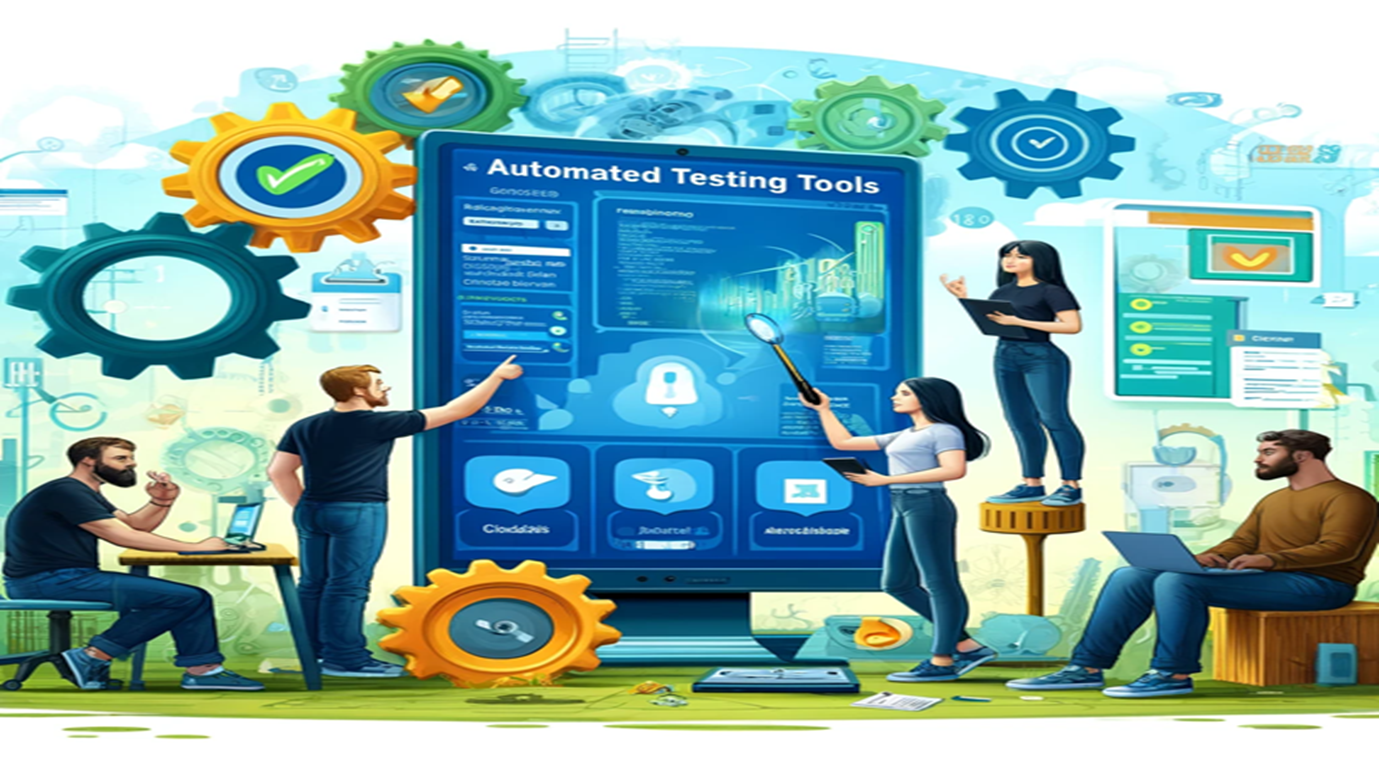Introduction
The software development landscape is in a state of perpetual flux. Agile methodologies and DevOps practices have become the norm, demanding faster development cycles and continuous delivery.
In this dynamic environment, manual testing is simply unsustainable. Automated testing tools have emerged as the heroes of the hour, streamlining the testing process, improving efficiency, and ensuring software quality.
In response to these evolving demands, this article has meticulously compiled a list of the best automated testing tools for 2024. These tools are at the forefront of technological innovation, equipped to handle the complexities of modern software development and ensure seamless integration into Agile and DevOps environments.
Current Trends and The Rise of Next-Generation Testing Tools
The software development landscape is constantly evolving, with trends like cloud-native development, microservices architectures, and the proliferation of mobile applications shaping the way we build software. Traditional testing methods struggle to keep pace with these rapid advancements. Next-generation automated testing tools, leveraging artificial intelligence (AI) and machine learning (ML), are revolutionizing the testing landscape. These tools offer enhanced capabilities, including:
- Improved test automation and maintenance: Automated testing tools can automate repetitive tasks, freeing up valuable time for testers to focus on more strategic initiatives.
- Advanced self-healing capabilities: Next-generation tools can automatically identify and adjust to changes in the application under test, reducing maintenance overhead.
- Enhanced scalability and performance: These tools are designed to handle the demands of large-scale, complex applications.
- Integration with DevOps workflows: Seamless integration with DevOps tools and pipelines facilitates continuous testing and delivery.
By embracing automated testing tools, organizations can achieve significant benefits, including:
- Faster time-to-market: Automation accelerates the testing process, enabling faster release cycles.
- Improved software quality: Automated tests provide comprehensive coverage, identifying defects early in the development lifecycle.
- Reduced costs: Automation eliminates the need for manual testing efforts, leading to cost savings.
- Enhanced team productivity: Testers can focus on higher-level tasks, such as test strategy and exploratory testing.
In the next section, we’ll delve deeper into automated testing, exploring its history and its growing importance in Agile and DevOps environments.
Understanding Automated Testing: A Historical Perspective
Software testing has come a long way since its humble beginnings. In the early days, testing was primarily a manual process, with testers meticulously working through test cases to identify bugs and errors. Automated testing tools first emerged in the 1990s, offering a way to automate repetitive tasks and improve testing efficiency.
The early automated testing tools were relatively simple, often focused on scripting user interactions. However, as software development methodologies have evolved, automated testing tools have become increasingly sophisticated. Today’s tools support a wide range of testing types, including:
- Unit testing: Tests individual units of code.
- Functional testing: Verifies that the application meets its functional requirements.
- Integration testing: Ensures that different parts of the application work together seamlessly.
- API testing: Tests the functionality of application programming interfaces (APIs).
- UI testing: Verifies the user interface (UI) is functional and user-friendly.
The Rise of Agile and DevOps: A Perfect Match for Automated Testing
Agile methodologies and DevOps practices emphasize continuous integration, continuous delivery (CI/CD), and rapid feedback loops. Automated testing tools align perfectly with these principles by enabling:
- Frequent and automated test execution: Tests can be run automatically after every code commit, providing immediate feedback on the impact of changes.
- Improved test coverage: Automation allows for comprehensive testing of all application functionalities.
- Faster release cycles: By automating tests, organizations can release new features and bug fixes more frequently.
Choosing Wisely: Essential Criteria for Selecting Automated Testing Tools in 2024
Selecting the right automated testing tool is crucial for maximizing the benefits of test automation. Here are some key factors to consider when making your decision:
- Ease of Setup and Integration: Look for tools that are easy to set up and integrate with your existing development environment and DevOps toolchain. A smooth integration process minimizes disruption and ensures efficient workflows.
- Support for Multiple Programming Languages and Frameworks: Consider the programming languages and frameworks your development team uses. The ideal automated testing tool should offer seamless support for these technologies to avoid unnecessary complexity.
- Scalability and Performance: As your application grows in complexity, your automated testing tool needs to scale accordingly. Evaluate the tool’s ability to handle large test suites and complex applications without compromising performance.
- Reporting Features and Analytics: Robust reporting features are essential for analyzing test results, identifying trends, and tracking progress. Look for tools that provide detailed reports with actionable insights.
- Community Support and Documentation: A strong community and comprehensive documentation can be invaluable resources for learning, troubleshooting, and getting the most out of your automated testing tool.
- Cost-Effectiveness: Automated testing tools range in price from open-source options to enterprise-grade solutions. Consider your budget and specific needs when evaluating tool pricing models.
Accelerate Your Development Cycle
Embrace Agile and DevOps synergy with premier automated testing tools. Streamline workflows and boost software quality effortlessly.
Beyond the Basics: The Allure of AI-Powered Automation
The future of automated testing is undoubtedly intertwined with Artificial Intelligence (AI) and Machine Learning (ML). These advanced technologies are transforming the way we automate tests, offering significant benefits:
- Enhanced Accuracy: AI-powered tools can learn from past test data and identify patterns to predict potential defects with greater accuracy.
- Faster Test Creation and Maintenance: AI can analyze user behavior and application interactions, automatically generating and maintaining tests, reducing manual effort.
- Improved Anomaly Detection: AI algorithms excel at identifying subtle anomalies in application behavior, enabling proactive detection of potential issues.
While AI integration in automated testing tools is still evolving, it represents a significant leap forward.
Unveiling the Powerhouse 10: Best Automated Testing Tools of 2024
The landscape of automated testing tools is brimming with innovation. Selecting the perfect tool hinges on your specific project requirements, technical expertise, and budget. Here’s a comprehensive breakdown of the 10 Best Automated Testing Tools of 2024, highlighting their strengths and guiding you towards the ideal choice for your organization:
- Selenium:
- Key Features: Open source, supports various programming languages and frameworks, offers a robust API for custom scripting.
- Suitable Use Cases: Web application testing across browsers and devices, ideal for advanced users with scripting experience.
- 2024 Updates: Enhanced support for headless testing and mobile automation frameworks.
- Pricing: Free (open source)
- Cypress.io:
- Key Features: Modern JavaScript-based tool focuses on end-to-end testing with a user-friendly interface.
- Comparison with Selenium: Easier to learn and use compared to Selenium, offers built-in features like time travel debugging.
- Unique Selling Points: Excellent developer experience, well-suited for modern web applications built with JavaScript frameworks.
- User Feedback and Ratings: Praised for its ease of use and intuitive interface, receives high marks for developer experience.
- Appium:
- Key Features: Open-source tool for mobile app testing across iOS and Android platforms.
- Advanced Features like AI Capabilities: While not natively AI-powered, Appium integrates with AI testing frameworks like Applitools for enhanced visual validation.
- Integration Capabilities with Other Software Tools: Integrates seamlessly with popular CI/CD tools and test management platforms.
- Katalon Studio:
- Specific Advantages: Open-source edition available, offers a user-friendly interface with drag-and-drop functionalities for test case creation.
- Technological Innovations: Supports various testing types, including API, mobile, and web UI testing.
- Drawbacks: Free edition has limitations; enterprise edition requires a paid subscription.
- Robot Framework:
- Strengths: Keyword-driven framework promotes a business-readable testing approach, ideal for teams with limited coding experience.
- Drawbacks: Learning curve can be steeper compared to some visual tools, may not be suitable for complex test automation scenarios.
- TestProject:
- Focus: Open-source tool designed for web and mobile app testing, offers record-and-replay functionality for faster test creation.
- Unique Selling Points: Cloud-based execution environment simplifies test maintenance, offers a free community edition with generous usage limits.
- Tricentis Tosca:
- Strengths: Enterprise-grade tool with comprehensive features for various testing types, including API, mobile, and web UI testing.
- AI Capabilities: Leverages AI for test automation recommendations and self-healing functionalities.
- Pricing: Paid subscription model with various licensing options.
- Ranorex Studio:
- Specific Advantages: User-friendly interface with visual recording for test case creation, supports various testing types including desktop, web, and mobile applications.
- Drawbacks: Paid subscription model, may require a steeper learning curve for advanced functionalities.
- LoadView:
- Focus: Cloud-based performance testing tool, ideal for simulating real-world user loads and identifying performance bottlenecks.
- Integration Capabilities with Other Software Tools: Integrates with popular DevOps tools and CI/CD pipelines for seamless performance testing integration.
- SoapUI:
- Strengths: Open-source tool specifically designed for API testing, offers powerful features for functional and security testing of web services.
- Drawbacks: Learning curve can be steeper compared to some user-friendly tools, may not be suitable for broader test automation needs beyond APIs.
Choosing the Right Tool: A Comparative Analysis
To assist you in selecting the automated testing tool that best aligns with your requirements, the following table offers a high-level comparison:
| FEATURE | SELENIUM | CYPRESS.IO | APPIUM | KATALON STUDIO | ROBOT FRAMEWORK | TESTPROJECT | TRICENTIS TOSCA | RANOREX STUDIO | LOADVIEW | SOAPUI |
| Open Source | Yes | Yes | Yes | Yes (Community Edition) | Yes | Yes | No | No | No | Yes |
| Primary Testing Focus | Web | Web | Mobile | Multi (Web, Mobile, API) | Multi (Keyword-driven) | Web & Mobile | Multi (Web, Mobile, API) | Multi (Web, Mobile, Desktop) | Performance | API |
| Ease of Use | Moderate (Scripting required) | Easy | Moderate | Easy (Drag-and-drop | ||||||
| AI Integration | No (integrations possible) | No | No (integrations possible) | No | No | No | Yes | No | No | No |
| Pricing | Free | Free (with limitations), Paid plans | Free | Free (Community Edition), Paid plans | Free | Free (Community Edition), Paid plans | Paid | Paid | Paid | Free |
User Satisfaction Ratings and Industry Awards in 2024
Based on user reviews on platforms like G2 Crowd and Capterra, Cypress.io and TestProject consistently receive high marks for their ease of use and intuitive interfaces. For more comprehensive functionality and enterprise-grade features, Tricentis Tosca and Ranorex Studio are industry leaders, frequently recognized for their robust capabilities.
Remember, the ideal automated testing tool doesn’t exist in a vacuum. Carefully evaluate your specific needs, technical expertise within your team, and budget constraints before deciding.
Unveiling the Future: The Evolving Landscape of Automated Testing

The future of automated testing is brimming with exciting possibilities. Here’s a glimpse into what we can expect in the coming years:
- Enhanced AI integration: Automated testing tools will become even more intelligent, leveraging AI and machine learning to automate more complex tasks, identify emerging trends, and predict potential defects with unparalleled accuracy.
- Self-healing automation: Automated tests will become more dynamic and adaptable, self-healing in response to changes in the application under test, minimizing maintenance overhead.
- Focus on user experience (UX): Automated testing tools will incorporate capabilities for advanced UI testing, ensuring applications are not only functional but also user-friendly and intuitive.
- The Rise of Low-Code/No-Code Testing: Automated testing tools will offer more low-code/no-code functionalities, empowering testers with limited coding experience to create and maintain automated tests.
By embracing these advancements and strategically leveraging automated testing tools, organizations can gain a significant competitive edge in the ever-evolving software development landscape.
Conclusion: The Power is in Your Hands - Embrace Automated Testing Tools for Success
In the swiftly evolving world of software development, clinging to manual testing methodologies is not just inefficient—it’s a relic of the past. Automated testing tools emerge as a beacon of progress, offering a robust framework that streamlines processes, elevates software quality, and accelerates delivery timelines.
We’ve delved into the top 10 automated testing tools of 2024, showcasing their cutting-edge features, functionalities, and adaptability. As you consider which tool might best suit your project needs and team expertise, let Neuronimbus guide your journey. With our deep industry insights and technological prowess, we stand ready to integrate and optimize these powerful tools within your projects, ensuring a seamless fit and unmatched efficiency.
Step into the future of testing without delay. Many of these pioneering tools offer free trials or open-source versions, inviting you to explore and identify the ideal match for your needs. Moreover, Neuronimbus offers tailored workshops and expert-led courses designed to enhance your team’s proficiency in these state-of-the-art technologies.
Embrace the power of automated testing with Neuronimbus by your side. Empower your team to craft exceptional software solutions that not only meet but exceed the dynamic demands of today’s digital landscape. Elevate your testing strategy and achieve your development ambitions with precision and flair. Start your transformative journey today and let Neuronimbus be your partner in achieving testing and development excellence.




